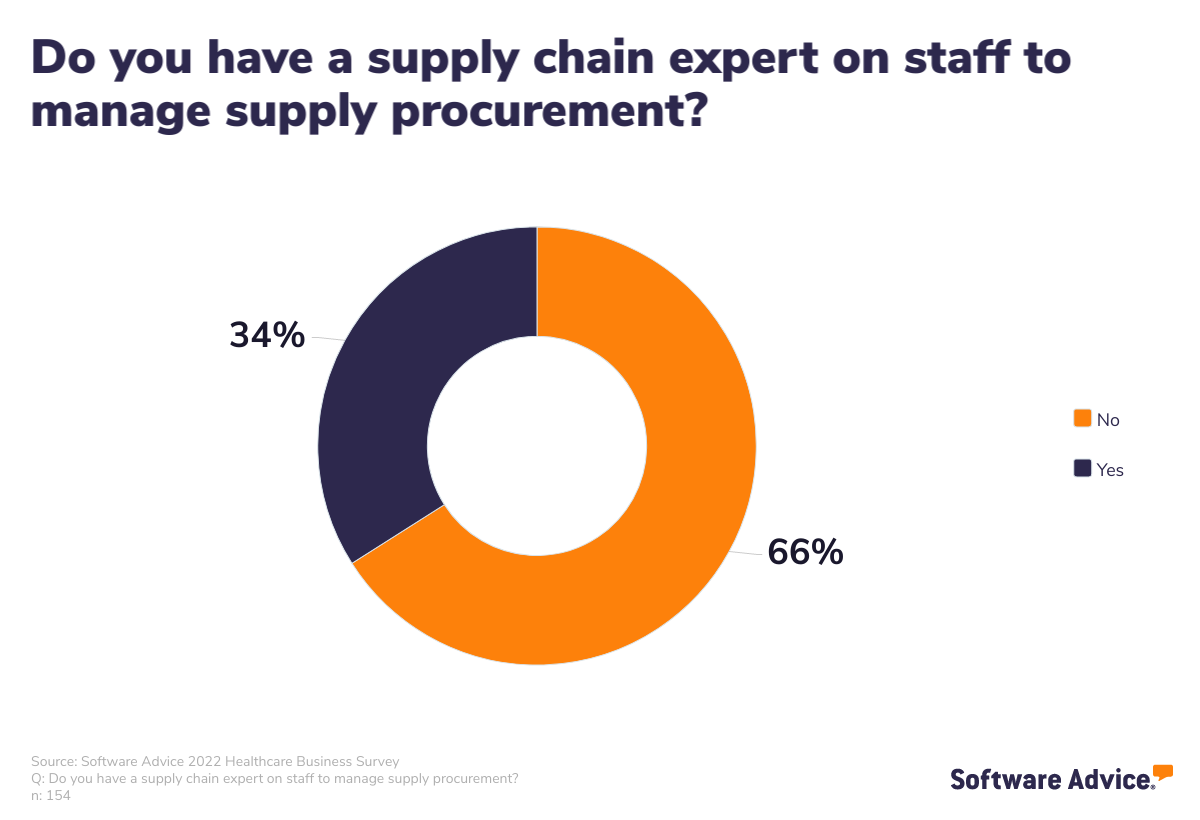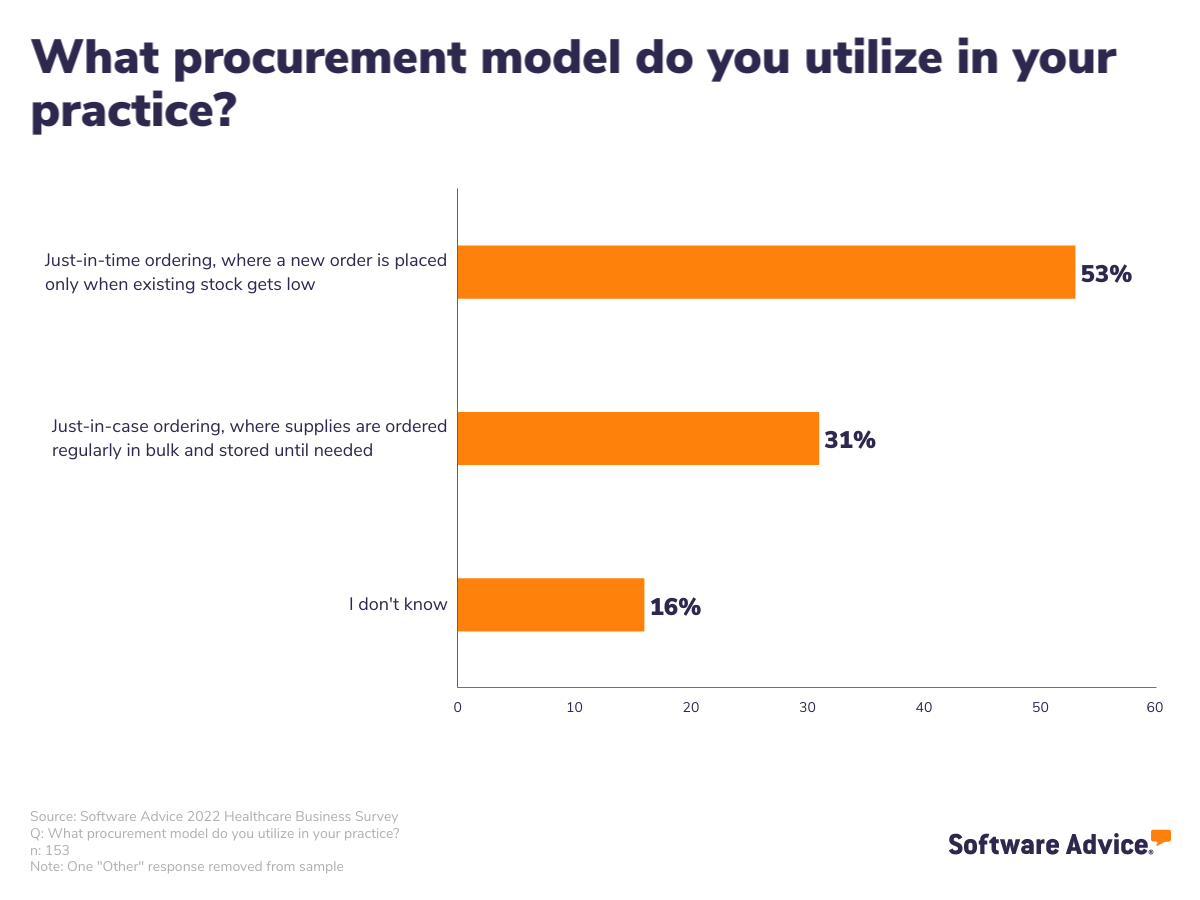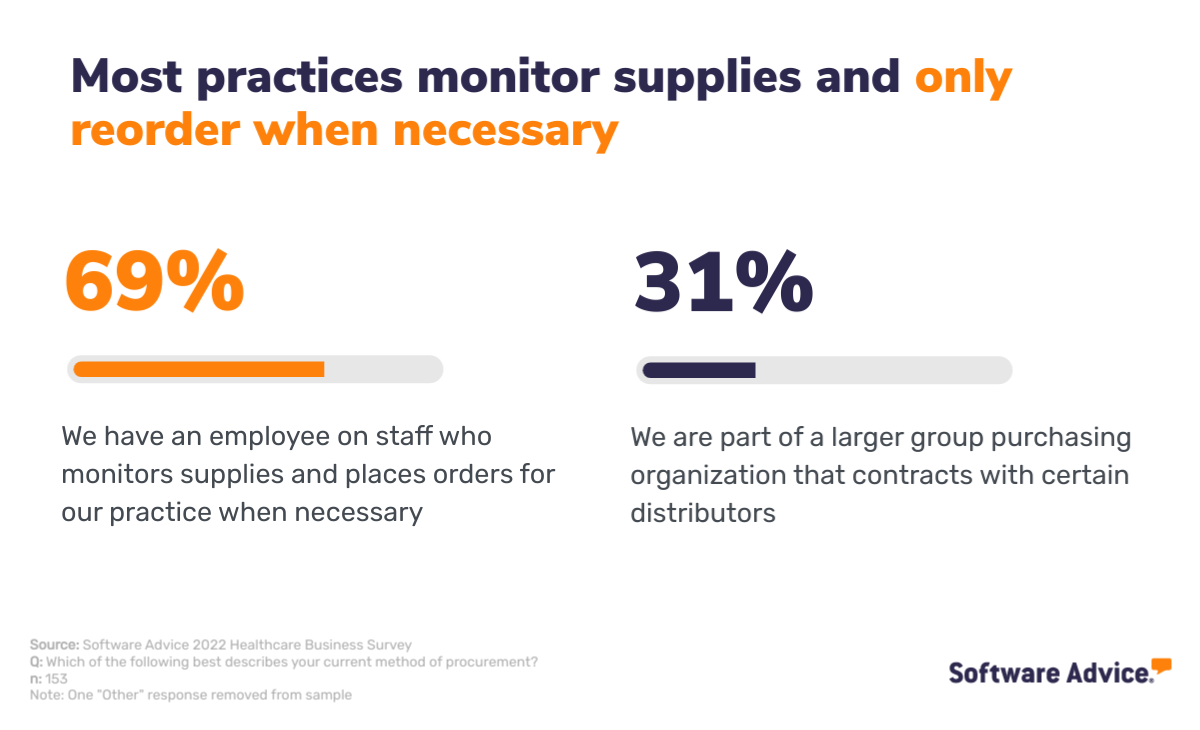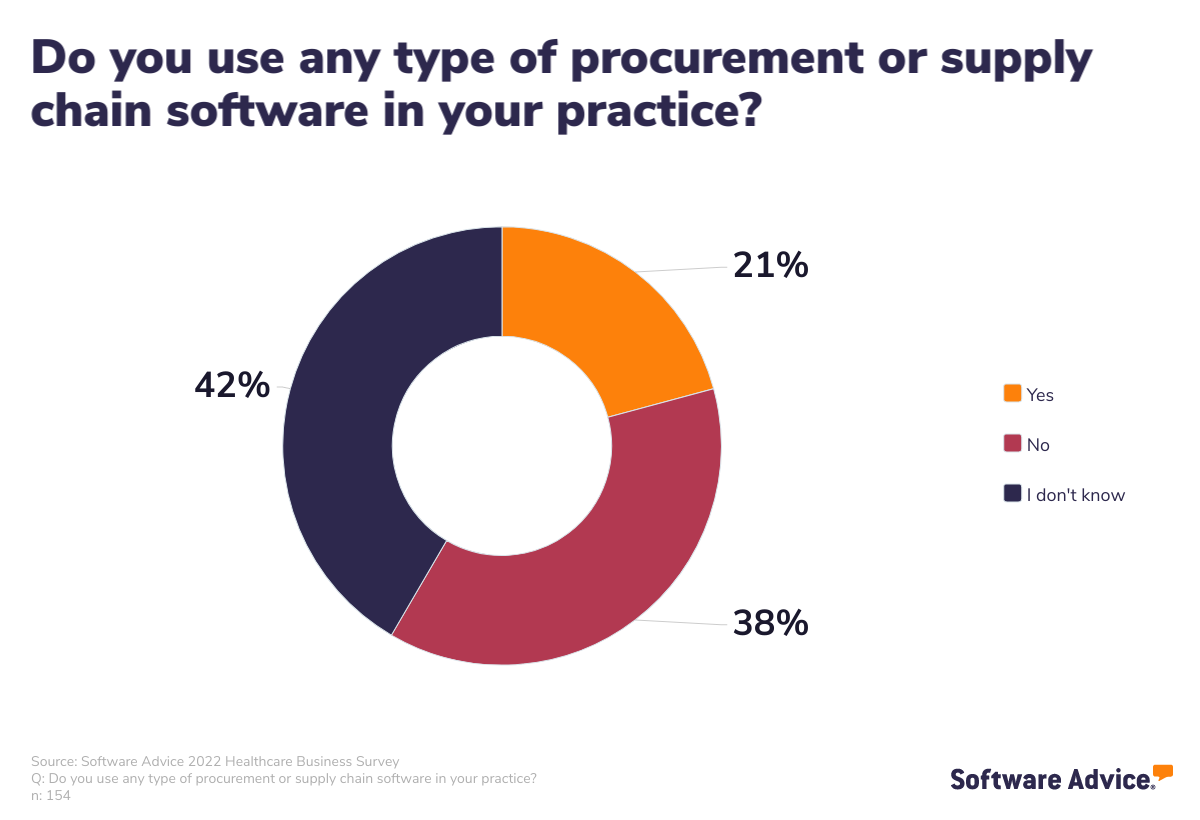[*][**]
The global supply chain crisis continues to plague every industry—but in healthcare, the consequences can be life-threatening.
This crisis isn’t slowing down, so we wanted to find the best information to help you face it. We surveyed 154 doctors, nurses, and office administrators[*] about how the healthcare supply chain crisis is affecting practices and patients, and how providers are managing inventory.
Below, we break down our findings and provide data-backed advice to help your practice better manage this crisis.
We also asked Olivia Montgomery–PMP and associate principal analyst with Software Advice, specializing in supply chain management—for her expert insights and to provide practical and effective solutions for providers.
Key findings
- 84% of providers say they or their patients have been directly impacted by the supply chain crisis, with the most common consequence being disruption of patient access to prescribed medications (55%).
- Most providers use passive methods to manage their supplies: 53% only reorder when supplies are low, 66% don’t have a supply chain specialist on staff to manage inventory, and nearly half (42%) don’t even know if they use procurement software at their practice.
- While 61% of providers have accepted these supply chain issues as the new normal, a quarter say they feel pessimistic and discouraged about supply chain challenges.
We’ll cover:
Patient access to medications is being cut off
One purpose for our survey is to fully understand the stakes—what exactly are doctors and patients dealing with due to current logistical issues?
We asked survey respondents whether they or their patients have been affected by the supply chain crisis; 84% said yes.
But how are providers and patients being impacted? The top response: Patients are having trouble accessing prescribed medications.
While drug shortages aren’t a new phenomenon, the extent of this one is extreme. Over 80% of active drug ingredients are produced overseas, which makes obtaining them a complicated endeavor[1]. According to the FDA, there are currently 124 open shortages of medically necessary drugs in the U.S.[2]
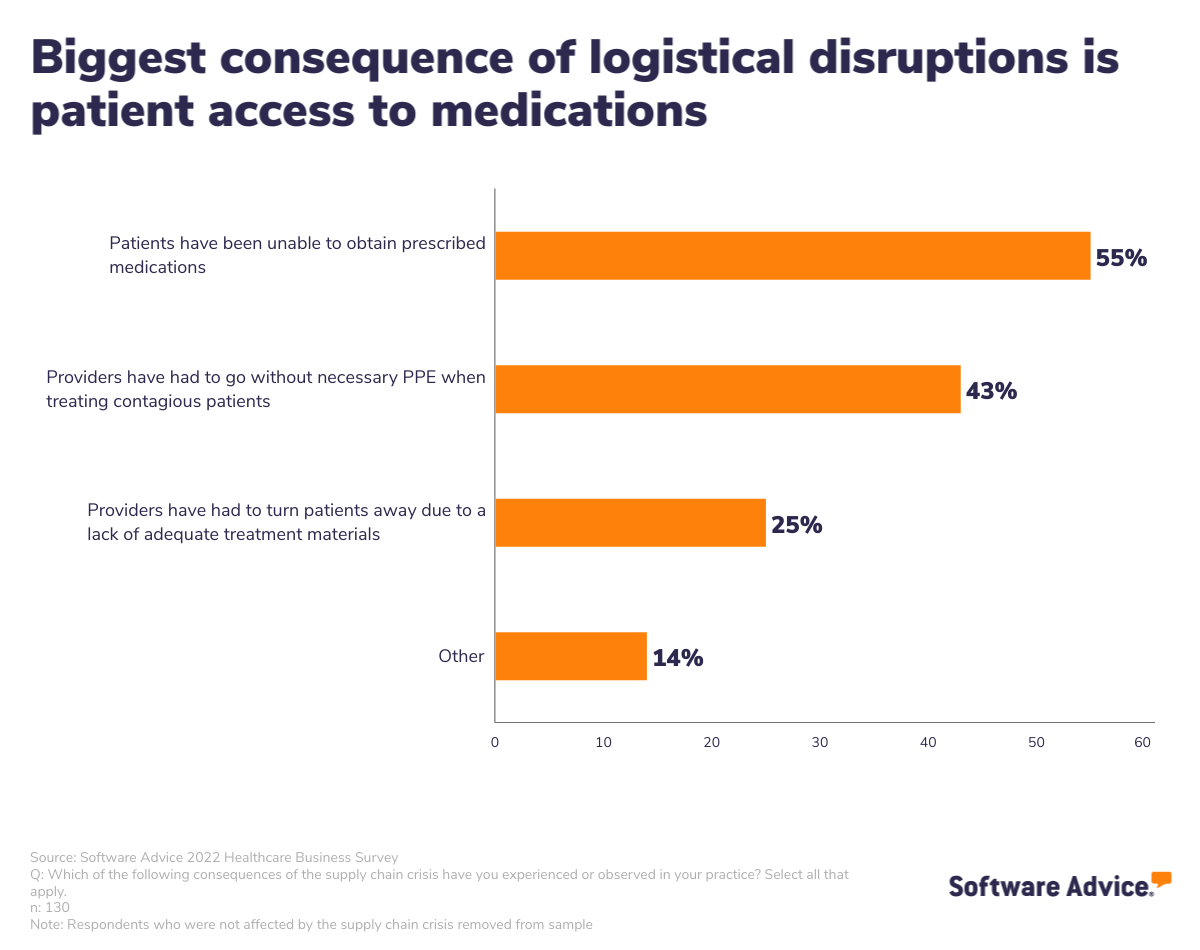
The second most-selected response to this question is that providers are being forced to treat contagious patients without the necessary personal protective equipment (PPE), which is especially galling as we meet yet another wave of Omicron cases.
And finally, a quarter of providers say they have had to actually turn patients away due to a lack of medical products and treatment materials. So not only are we dealing with a shortage of qualified healthcare workers, patients are also facing limited access to actual medical care.
In a more detailed look at the supplies practices are struggling to obtain, drugs and PPE were again the top contenders. Nearly half said general care materials are in short supply, and a third cited cleaning supplies.
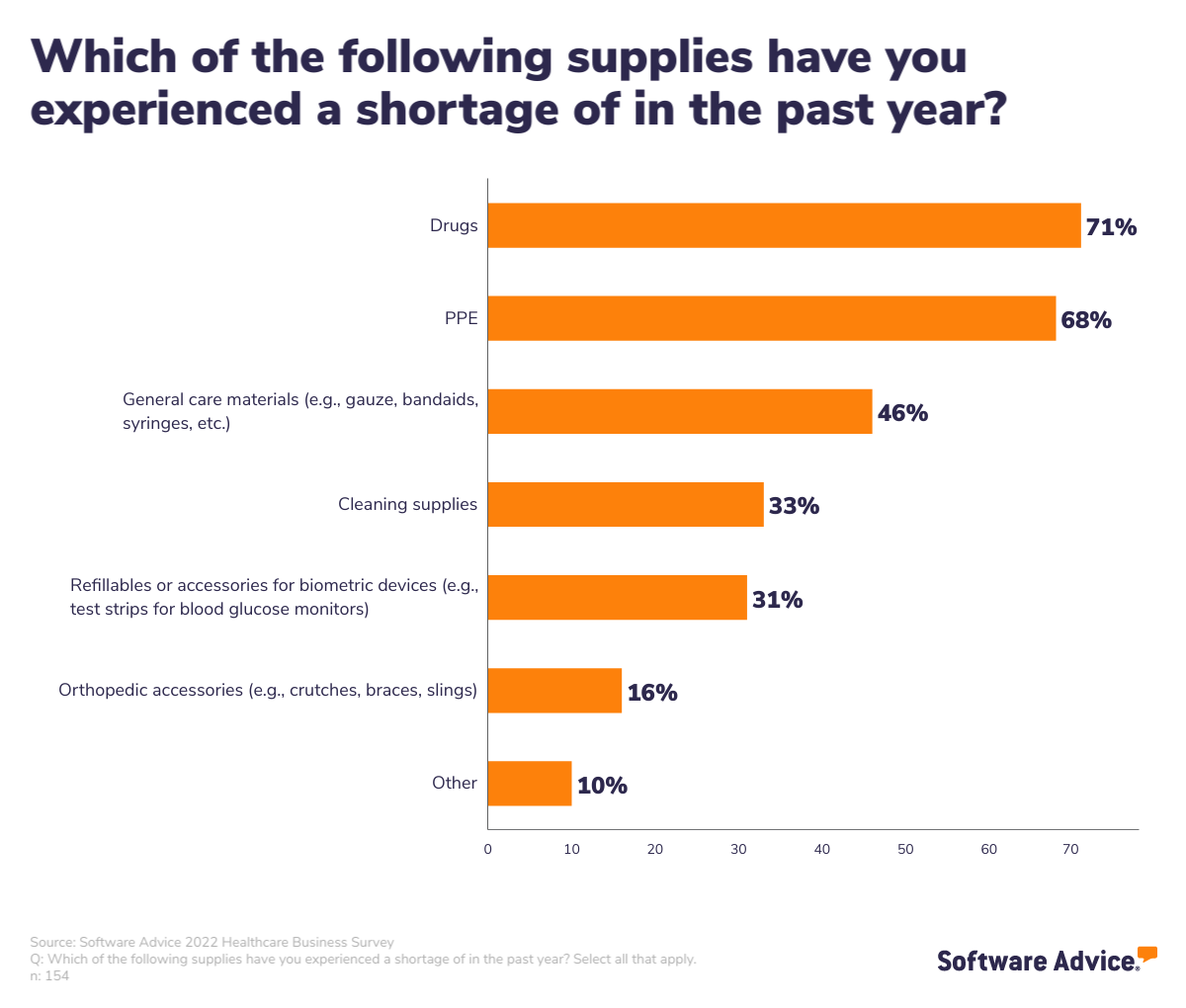
There’s also a concerning shortage in refillable materials for certain biometric devices and other wearable technologies. We expect this issue to float to the top of some prioritization lists as providers look more and more to telehealth and remote patient monitoring tools to manage treatment of increased patient loads.
Telemedicine has been a huge boon to doctors in this time of remote patient care, but a lack of peripheral tools that enable this care delivery method could prove to be a stumbling block for telemedicine in the future.
Doctors haven’t lost hope, most feel this is simply the new normal
Speaking of the future, we wanted to find out how providers are feeling about that very thing as it relates to the supply chain crisis.
It turns out that most have accepted the current state of affairs as the new normal, and their current priority is finding ways to adapt and better manage their medical supplies.
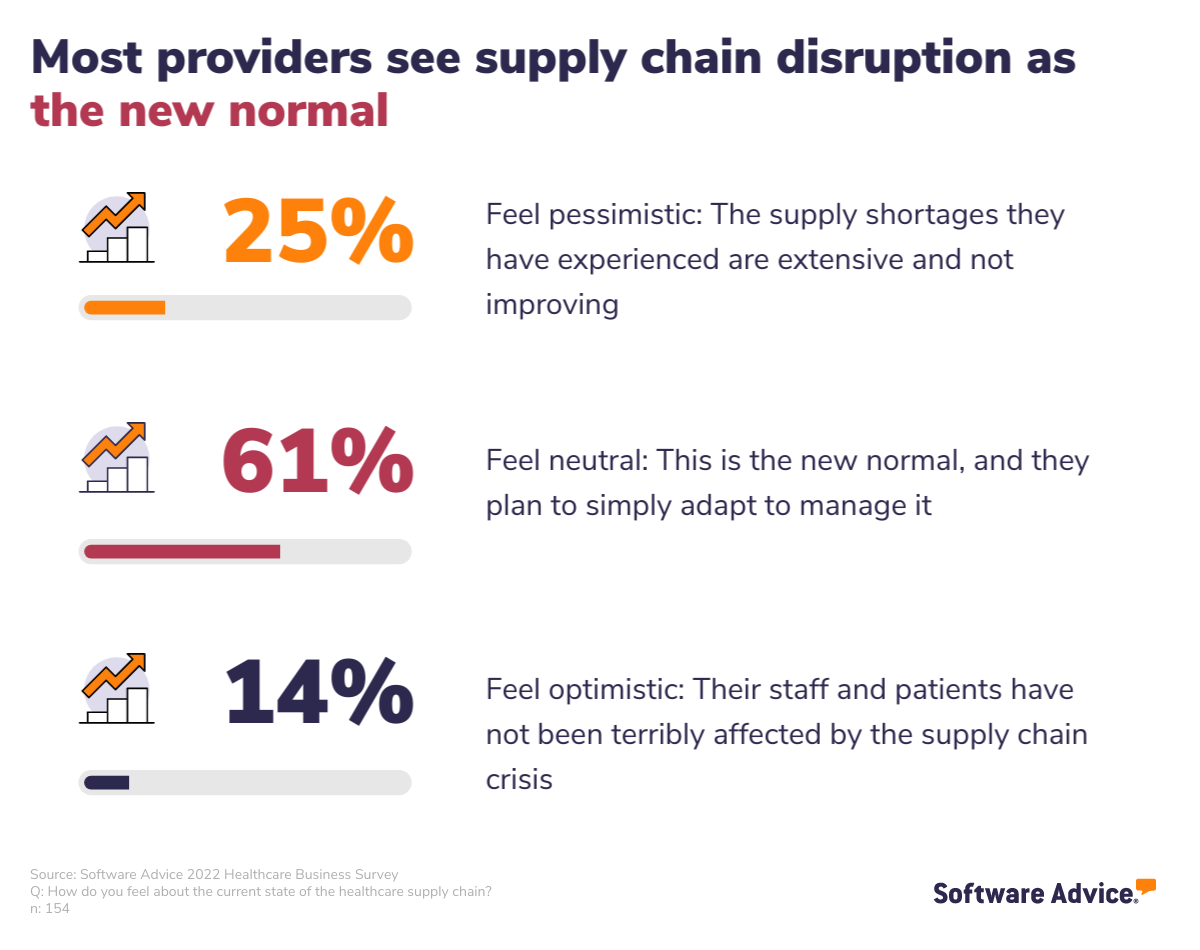
This is a good outlook to have, as all signs point to even more logistical disruptions in the future.

We all enjoyed nearly unfettered global trade for the past 70 years, but the fact is clear this is no longer the case. From increasingly tense trade agreements with non-Western countries to climate change affecting manufacturing and logistics, the supply networks today’s businesses have designed their inventory management strategies around are too stressed to support them.
Businesses that continue to expect a steady supply of cheap and ever-ready products from overseas will be left without inventory as they deal with long wait times—if the items ever arrive.
Olivia Montgomery, PMP



